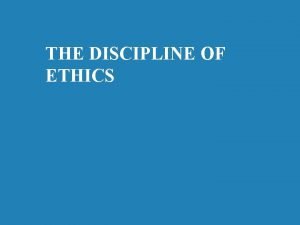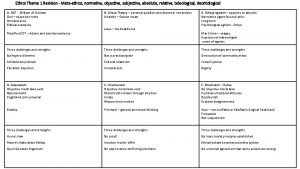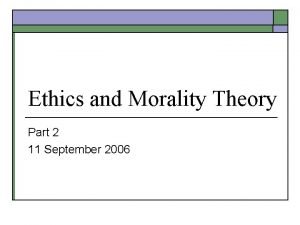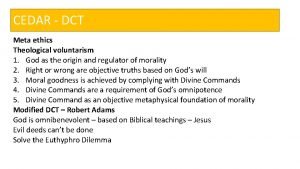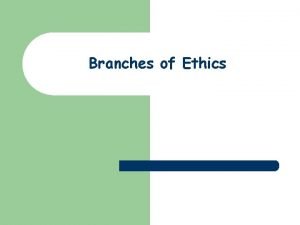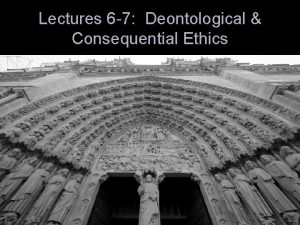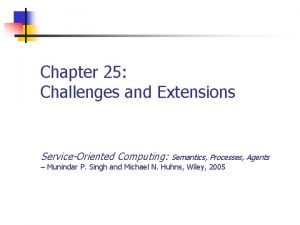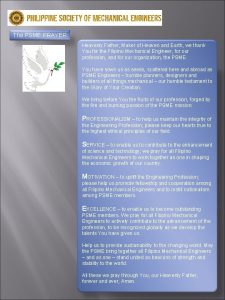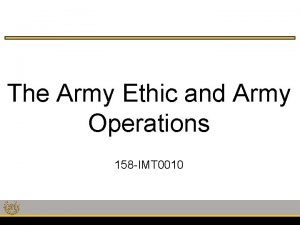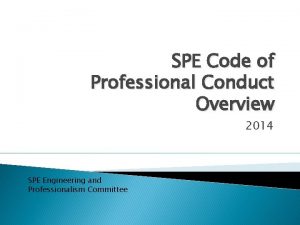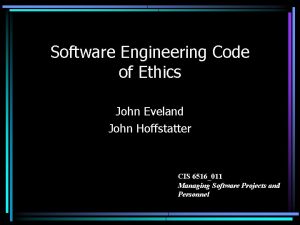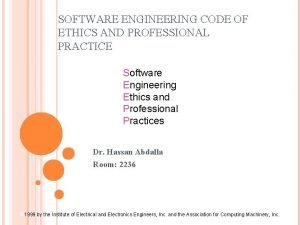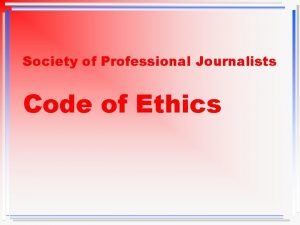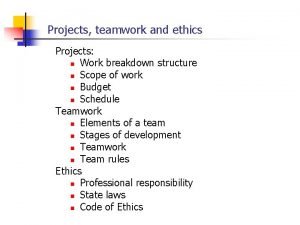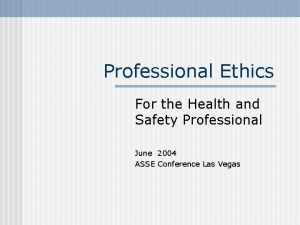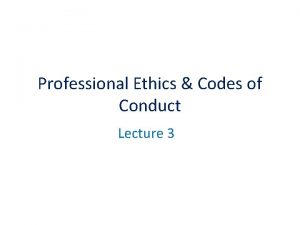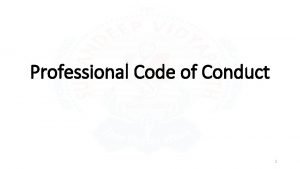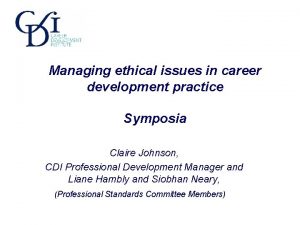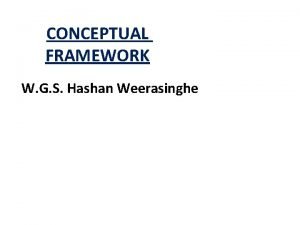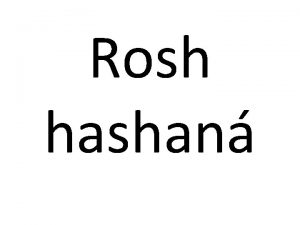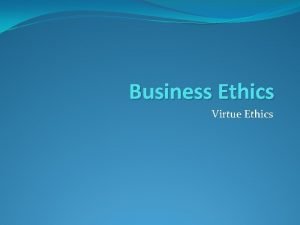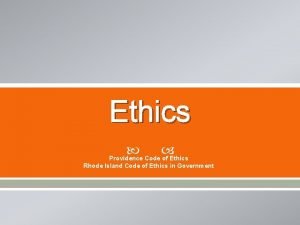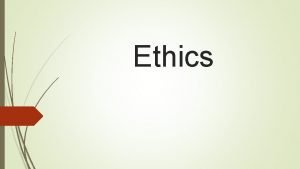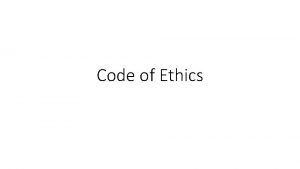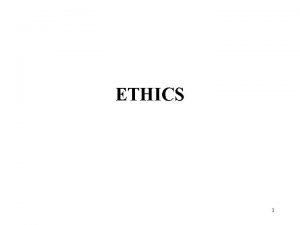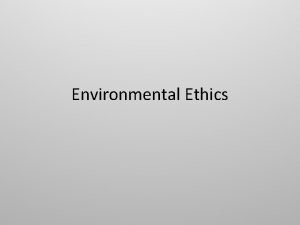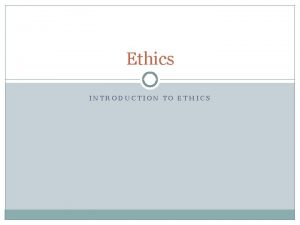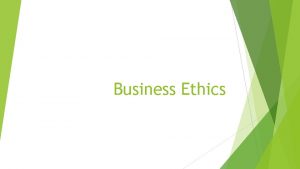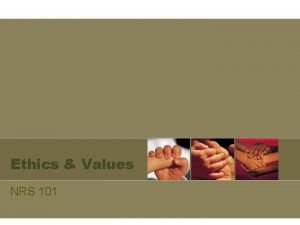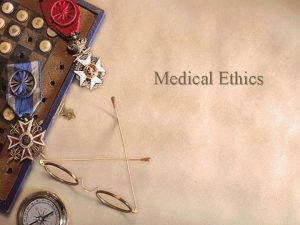CODE OF ETHICS W G S Hashan Weerasinghe

























- Slides: 25

CODE OF ETHICS W. G. S. Hashan Weerasinghe

Introduction – CIMA Code of Ethics • Set of guild lines set specifically for the CIMA members and the registered students in order to refrain from carrying out any activity that discredit their field of work. • CIMA promotes the highest ethical standards around the word. • CIMA members are bound to inform the Institute of any misconduct or disqualification at work.

Continue…. . • CIMA has adopted following Code of Ethics , - IFAC (International Federation of Accountants. • A member may seek legal advice in case if these don’t qualify to help the ethical problem.

Why are Ethics Important? • A set of Moral Principles • Fairness , honesty and responsibility. Ethics are important because, • Accounts should work properly • How an entity is run • For the discipline of Accountants

CIMA’s Code at a Glance Principles • Code of ethics can help anyone despite of their area of work. • CIMA points out high ended ethical issues that need to be answered. • 5 fundamental principles produce the basic code of ethics.

Five Fundamental Principles (1) OBJECTIVITY (2) PROFESSIONAL COMPETENCE & DUE CARE (3) PROFESSIONAL BEHAVIOR (4) INTEGRITY (5) CONFIDENTIALITY

Objectivity • Resistance to bias, conflict of interest, or influence of others to over ride the professional judgments.

Professional Competence and Due Care • Maintaining and developing the professional knowledge and skills so that the employers and the clients receive a competent service. • Making sure the subordinates are maintaining their competent and committing a full service to the organization

Professional Behavior • Complying with the relevant rules and regulations in the line of your work and laws that you are agreed upon.

Integrity • Being Honest, straight-forward, and truthful in all professional relationships. You should not associate with any information that is false and lead to wrong judgments.

Confidentiality • Securing of the Confidential information receive from the professional relationships in both present and past. • Disclose only under legal permission.

Continue…. • For each and every case these codes may not provide the solutions. • Ethical codes are more effective than set rules, because people tend to break rules but Ethical Codes are not compulsory and it just requires following.

Threats • It is very important to anticipate potential and existing threats to these principles. • The code has identified 5 categories of common threats.

Self Interest Threats • The threats that results in conflict of interest. The possibility of someone choosing the personal objectives and benefits over the company’s principles.

Self review threats • The threats that create when you are required to reevaluate the past decisions , judgments and implementations.

Familiarity Threats • Threats create when you make professional judgments based on sympathetic interests of close relationships. • These relationships are resulted for long term business contacts, accepting gifts, association with colleagues and etc.

Intimidation Threats • This emerge when you have fear of acting objectively. • Because of the fear of dismissal or due an influence from a dominant personality.

Advocacy Threats • The threat created when you are promoting an opinion or position in a way that harms the objectivity. • In General , the employer’s opinions and requirements.

EXAM FOCUS • When you are facing the OT Questions, you will be given a scenario where you are required to identify the threats and assign the ideal principle that is affected.

Safe Guards • The first step to safe guard is to anticipate the significance of the threat. • Then followed by the actions to eliminate or reduce. • Code does not specifically mention the safe guards in detail for each threat. But it gives the guidelines.

Ethical Dilemma • Ethical Dilemma is referred to as a complex situation where you stuck between the moral values and outside influence. For example : Preparing false reports to gain tax advantages under management pressure

Resolving an Ethical Dilemma • First think of the fundamental Principles of CIMA code of ethics that applies company’s internal procedures. • Then weigh up the threats according to the result that will cause. • Examine for the alternatives and put them in to the practice.

Continue • Ethical Dilemma is answered by the ethical safe guards. • Incase of failiure to respond to a threat seek for a third party assistance. Eg : professional consultancy

Process of responding to an Ethical Dilemma 1. Gather information to confirm if it is an ethical problem. 2. Seek internal Assistance eg: Manager 3. If the issue is internally general and fails to get help from inside seek external Assistance eg: External Auditor. 4. Resign from the situation

Examples of ethical issues : • Direct and Indirect demands for bribes and attempts at extortions • Dealing with unfair competition • Honesty in advertising jobs • Management of closures and redundancies • Effects of consuming • Dealing with oppressive governments • Non-exploitation of countries and people
 Busceral
Busceral What is environmental ethics
What is environmental ethics Normative ethical questions
Normative ethical questions Micro ethics definition
Micro ethics definition 6075 meaning
6075 meaning Metaethics vs normative ethics
Metaethics vs normative ethics Descriptive ethics vs normative ethics
Descriptive ethics vs normative ethics Beneficence examples
Beneficence examples Is/ought distinction
Is/ought distinction Branches of ethics
Branches of ethics Deontological ethics
Deontological ethics Teleological ethics vs deontological ethics
Teleological ethics vs deontological ethics Psme prayer
Psme prayer Consolidation of gains
Consolidation of gains Code of ethics aasw
Code of ethics aasw Spe code of ethics
Spe code of ethics Software engineering code of ethics
Software engineering code of ethics Eight principles of software engineering
Eight principles of software engineering Society of professional journalists code of ethics
Society of professional journalists code of ethics Strategic & competitive intelligence professionals
Strategic & competitive intelligence professionals Teamwork breakdown
Teamwork breakdown Asse code of conduct
Asse code of conduct Acm code of ethics and professional conduct
Acm code of ethics and professional conduct Bctf code of ethics
Bctf code of ethics Code of conduct professional ethics
Code of conduct professional ethics Holly forester miller
Holly forester miller

